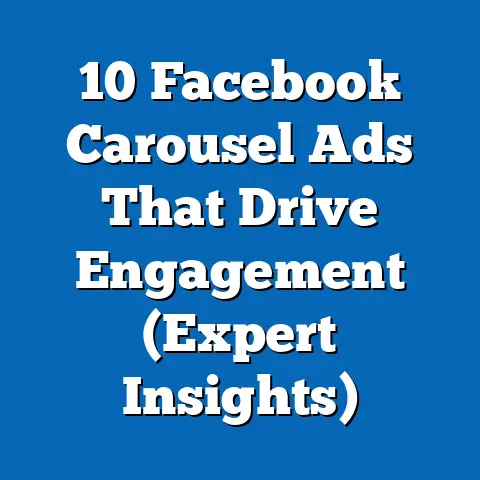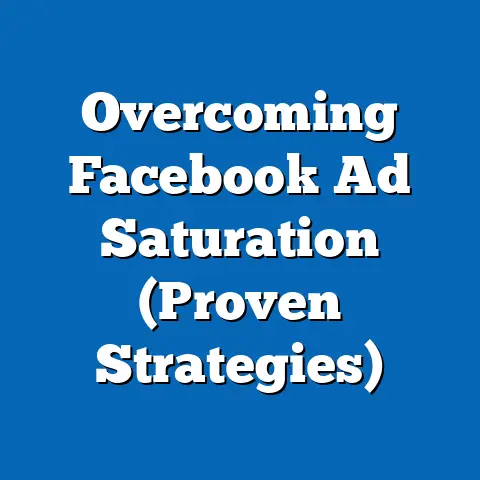Upload Video on Facebook with Music (Step-by-Step Guide)
The act of uploading videos on social media platforms like Facebook, especially with the integration of music, represents a timeless human impulse to connect, express, and share experiences. From the earliest days of storytelling through song and visual art to the modern era of digital content creation, the fusion of audio and visual elements has been a powerful tool for communication. In the context of Facebook, a platform that has evolved from a college networking site in 2004 to a global hub for over 2.9 billion monthly active users as of 2023 (Statista, 2023), adding music to videos has become a defining characteristic of personal and cultural expression in the digital age.
By exploring the intersection of technology, culture, and generational trends, we aim to illuminate how this seemingly simple act reflects deeper shifts in communication, creativity, and social interaction. We will also address the nuances of copyright issues, platform algorithms, and accessibility, ensuring a balanced and data-driven analysis.
Defining Characteristics of Uploading Videos with Music on Facebook
At its core, uploading videos with music on Facebook is characterized by creativity, accessibility, and social connectivity. Users can share personal milestones, promote businesses, or engage with viral trends by pairing video footage with songs that enhance emotional impact or cultural relevance. This feature, officially supported by Facebook through tools like the “Music” option in video uploads (introduced in 2018), allows users to select from a licensed library of tracks, mitigating copyright concerns while amplifying engagement.
Unlike earlier forms of media sharing, such as mailing VHS tapes or burning CDs, this digital practice is instantaneous and scalable, reaching global audiences within seconds. It also democratizes content creation, enabling individuals without professional editing skills to produce compelling videos using intuitive platform tools. However, the practice is not without challenges, including navigating copyright restrictions for unlicensed music and understanding algorithm-driven visibility.
Across generations, the motivations for uploading videos with music vary but often converge on a desire for self-expression or connection. For instance, younger users (Gen Z and Millennials) may focus on trend-driven content like dance challenges, while older users (Gen X and Baby Boomers) might share nostalgic family videos paired with classic songs. Despite these differences, the universal appeal of music as an emotional enhancer remains a unifying thread.
Historical Context: From Analog Sharing to Digital Integration
To understand the significance of uploading videos with music on Facebook, it is essential to trace the historical evolution of media sharing. In the pre-digital era, sharing personal videos often required physical media, such as VHS tapes in the 1980s and 1990s, which were cumbersome and limited in reach. Music integration was equally challenging, often requiring separate cassette players or rudimentary editing equipment.
The advent of the internet in the late 1990s and early 2000s marked a turning point, with platforms like YouTube (launched in 2005) pioneering user-generated video content. However, early social media platforms like MySpace and early Facebook focused primarily on text and static images, with video uploads being a later addition (Facebook introduced video sharing in 2007). The integration of music with videos on these platforms was initially fraught with legal challenges, as copyright laws struggled to keep pace with digital innovation.
Facebook’s introduction of a licensed music library in 2018, through partnerships with major labels like Universal Music Group and Sony Music, addressed these issues by providing users with a legal and accessible way to add music to their content. This development coincided with the rise of short-form video content on platforms like TikTok, which further popularized the audio-visual pairing trend. Historically, this shift reflects broader societal moves toward immediacy, personalization, and legal accountability in digital spaces.
Significant events, such as the 2012 passage of the EU Copyright Directive and the U.S. Digital Millennium Copyright Act (DMCA) of 1998, have also shaped how platforms like Facebook manage music usage. These laws forced social media companies to implement strict content moderation systems, influencing user behavior and platform features. Today, uploading videos with music is not just a creative act but a negotiation of legal and technological boundaries.
Step-by-Step Guide: Uploading a Video on Facebook with Music
For users looking to share videos with music on Facebook, the process is relatively straightforward, thanks to the platform’s user-friendly interface. Below is a detailed step-by-step guide based on the latest features available as of 2023. Note that this guide assumes access to the Facebook mobile app or desktop version, and some features may vary by region due to licensing agreements.
Step 1: Prepare Your Video Content
Before uploading, ensure your video is ready. This could be a pre-recorded clip from your device or one you plan to create using Facebook’s in-app camera. Keep in mind that videos with copyrighted music not available in Facebook’s library may be muted or removed, so consider using the platform’s licensed tracks.
Step 2: Access the Upload Feature
Open the Facebook app or website and log into your account. On the mobile app, tap the “Create Post” option at the top of your News Feed. On desktop, click “What’s on your mind?” at the top of the page, then select “Photo/Video” from the options.
Step 3: Upload or Record Your Video
Choose an existing video from your device’s gallery by tapping “Photo/Video” and selecting the file, or record a new video using the in-app camera. Once uploaded, you’ll see a preview of your video in the post creation screen.
Step 4: Add Music from Facebook’s Library
Tap the “Music” icon (often represented by a musical note) on the editing toolbar. This opens Facebook’s music library, where you can browse thousands of licensed tracks by genre, mood, or artist. Select a song that fits your video’s theme, and adjust the segment of the track to align with your content by dragging the slider.
Step 5: Customize and Review
After adding music, you can further edit your video by adding text, stickers, or filters if desired. Preview the video to ensure the music syncs well with the visuals. Note that some regions or accounts may have limited access to certain tracks due to licensing restrictions.
Step 6: Post Your Video
Once satisfied, choose your audience (public, friends, or a specific group) and add a caption if desired. Tap “Post” to share your video. Facebook’s algorithm may promote videos with music based on engagement trends, though visibility can vary.
Troubleshooting Tips
If your video is flagged for copyright issues (e.g., using unlicensed music), Facebook will notify you and may mute the audio or restrict the post’s reach. To avoid this, stick to the platform’s music library. Additionally, ensure your app is updated to access the latest features.
This process, while simple, underscores the intersection of technology and user creativity, a theme we will explore further in the societal implications section.
Societal Implications: Generational Trends and Cultural Shifts
The practice of uploading videos with music on Facebook has far-reaching implications across social, cultural, and economic domains. By examining generational trends and broader societal shifts, we can better understand how this digital behavior shapes and is shaped by the world around us.
Generational Engagement with Video and Music Sharing
Different generations interact with this feature in unique ways, influenced by their technological fluency and cultural contexts. Gen Z (born 1997–2012), often dubbed “digital natives,” uses music in videos to participate in viral challenges and express individuality, leveraging trends from platforms like TikTok that often cross-pollinate with Facebook. Millennials (born 1981–1996), who grew up during the internet’s formative years, often blend nostalgia with modernity, pairing videos with throwback hits or current pop songs to share life events.
Gen X (born 1965–1980) and Baby Boomers (born 1946–1964), while less likely to engage with trending content, frequently use music in videos to document family gatherings or historical moments, often opting for classic rock or jazz tracks that resonate with their formative years. According to a 2022 Pew Research Center study, 68% of Gen X and 54% of Baby Boomers use Facebook as their primary social media platform, compared to just 32% of Gen Z, highlighting how platform demographics influence content creation styles.
Despite these differences, the universal appeal of music as a storytelling tool bridges generational divides, fostering cross-age interactions through shared posts and comments. However, disparities in tech literacy can create barriers, with older users sometimes struggling with editing tools or copyright nuances.
Cultural Impact and Community Building
Culturally, uploading videos with music on Facebook reinforces the role of social media as a space for collective memory and identity formation. Music, often tied to specific eras or movements, acts as a cultural anchor, allowing users to connect over shared histories or experiences. For instance, a video of a 1960s protest march paired with Bob Dylan’s “Blowin’ in the Wind” can evoke powerful emotional responses across generations.
This practice also amplifies diverse voices, as users from different backgrounds share cultural songs and dances, promoting cross-cultural understanding. However, it can also perpetuate cultural appropriation if not approached thoughtfully, a concern raised by sociologists like Dr. Patricia Hill Collins, who emphasize the need for context in digital sharing (Collins, 2020).
Economic and Workplace Implications
Economically, the integration of music in videos has transformed marketing and content creation. Businesses, influencers, and creators use this feature to craft branded content that resonates emotionally with audiences, driving engagement and sales. A 2021 study by Hootsuite found that videos with music on social media platforms see 24% higher engagement rates than those without, underscoring the commercial value of this trend.
In the workplace, companies increasingly encourage employees to share behind-the-scenes videos with music to humanize their brand, a tactic particularly effective among younger demographics. However, this raises questions about privacy and professional boundaries, as personal and work-related content often blur on platforms like Facebook.
Technological and Legal Challenges
Technologically, the ease of adding music to videos reflects broader advances in user interface design and cloud-based editing tools. Yet, it also highlights ongoing tensions around data privacy and algorithmic bias. Facebook’s algorithm often prioritizes content with high engagement, which can disadvantage users who lack access to trending tracks or viral formats due to regional licensing restrictions.
Legally, the use of music in videos remains a contentious issue, despite Facebook’s licensed library. Users who upload videos with unlicensed tracks risk content removal or account suspension, a policy rooted in copyright laws like the DMCA. This has sparked debates about fair use and the balance between creator rights and platform control, with experts like Lawrence Lessig arguing for more flexible digital copyright frameworks (Lessig, 2019).
Comparing Generational Approaches: Nuances and Diversity
While generational trends provide a useful framework for understanding video and music sharing on Facebook, it is critical to avoid oversimplification. Within each generation, individual experiences vary widely based on socioeconomic status, cultural background, and personal interests. For instance, not all Gen Z users are obsessed with viral trends; many use music in videos to document social activism, reflecting a diversity of purpose.
Similarly, Baby Boomers are not uniformly tech-averse. A 2023 AARP survey found that 44% of adults over 50 regularly share videos on social media, often with music, to stay connected with grandchildren or peers. This challenges stereotypes and underscores the importance of viewing generations as dynamic, not monolithic.
Comparing across generations, younger users tend to prioritize immediacy and trendiness, often posting short, snappy videos with current hits. Older users, by contrast, may favor longer, narrative-driven content with timeless songs. These differences reflect not just age but also the technological and cultural environments in which each group came of age.
Forward-Looking Insights: The Future of Video Sharing with Music
As we look to the future, several trends and uncertainties will shape the practice of uploading videos with music on Facebook. Advances in artificial intelligence (AI) and augmented reality (AR) could revolutionize content creation, allowing users to generate custom soundtracks or immersive video experiences with ease. Meta, Facebook’s parent company, has already hinted at such innovations through its investments in the Metaverse.
However, evolving copyright laws and platform policies may impose stricter controls, potentially limiting user creativity. The rise of decentralized social media platforms could also challenge Facebook’s dominance, offering alternative spaces for music and video sharing with fewer restrictions.
Societally, the continued blending of audio and visual content will likely deepen digital connectivity, fostering global communities around shared interests. Yet, it also raises concerns about digital overload and mental health, as users face pressure to create “perfect” content. Balancing innovation with well-being will be a key challenge for future generations.
Conclusion
Uploading videos with music on Facebook is more than a technical process; it is a reflection of humanity’s enduring need to tell stories and build connections through multimedia. From its historical roots in analog media to its current role in digital culture, this practice encapsulates technological progress, legal complexities, and generational diversity. By providing a step-by-step guide alongside a nuanced analysis of societal impacts, this article has sought to illuminate both the “how” and the “why” of this behavior.
Looking ahead, the interplay of creativity, technology, and policy will continue to shape how we share videos with music, with implications for personal expression, cultural exchange, and economic opportunity. While uncertainties remain, one thing is clear: the timeless impulse to combine sight and sound will persist, evolving with each new generation and technological frontier. As researchers and users, our task is to navigate this landscape with curiosity, critical thinking, and a commitment to inclusive, ethical sharing.






